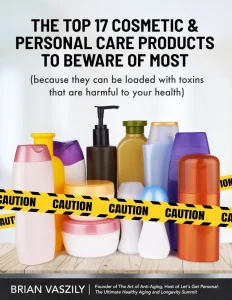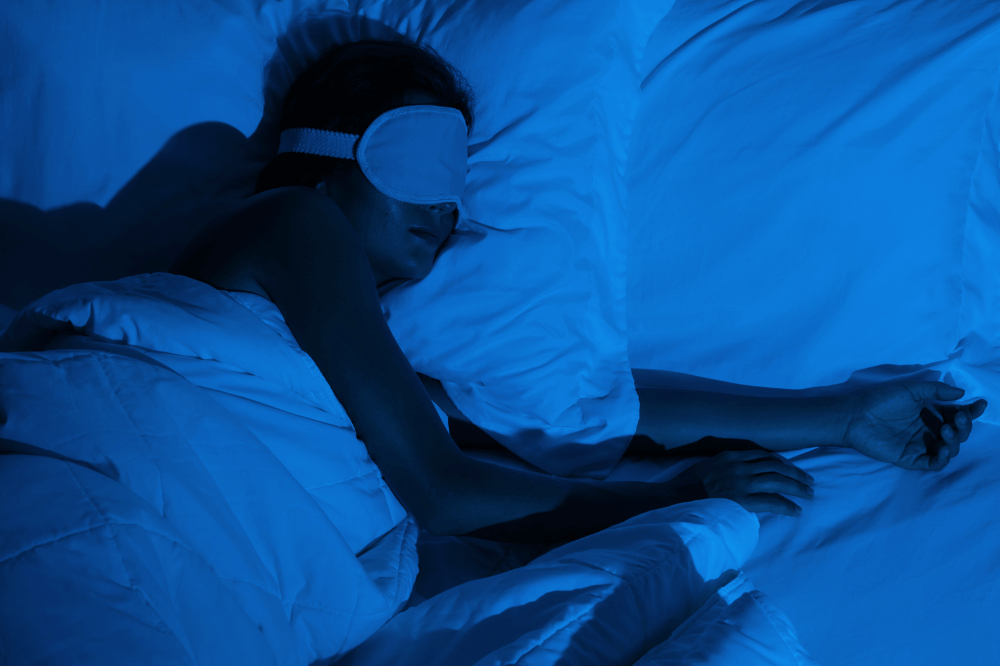Sleep is critical to your overall health and longevity. However, at least one in three adults do not get proper sleep and the problem is getting worse.
While multiple factors contribute to poor sleep, one widespread yet often overlooked aspect is environmental toxicants. These are substances that can interfere with various bodily functions, including sleep, and are increasingly prevalent in our daily lives.
From chemicals in consumer products such as cosmetics to environmental pollutants, chances are high that exposure to toxicants may be negatively impacting your sleep quality.
Below, you will discover the top 9 types of toxicants that may be disrupting your sleep. These toxicants include endocrine disruptors, pesticides, heavy metals, volatile organic compounds (VOCs), airborne particulates, blue light, noise pollution, and two other emerging types of toxicants.
You will also learn common sources of these substances and receive actionable steps to reduce your exposure.
1. Endocrine Disruptors
 What Are Endocrine Disruptors?
What Are Endocrine Disruptors?
Endocrine disruptors are chemicals that can interfere with the body’s hormonal system. These chemicals may mimic or block hormones and disrupt the normal functioning of the endocrine system. As hormones are critical in regulating various bodily functions, including sleep, exposure to endocrine disruptors can lead to disturbed sleep patterns, among other health issues.
Common Sources of Endocrine Disruptors:
Endocrine disruptors are commonly found in a variety of everyday products, such as:
- Cosmetics and personal care products (e.g., phthalates, parabens)
- Plastics and food packaging (e.g., BPA, phthalates)
- Pesticides
- Cleaning products
Research on Endocrine Disruptors and Sleep:
Studies have found that exposure to endocrine disruptors, such as phthalates, bisphenol A (BPA), and triclosan, can significantly affect sleep by altering circadian rhythms and sleep-wake cycles. For example, research on BPA exposure has shown associations with increased wakefulness and decreased slow-wave sleep, which is the most restorative phase of sleep. And note that certain alternatives to BPA, such as bisphenol S (BPS) and bisphenol F (BPF), may be just as harmful as BPA.
Key Steps to Reduce Your Exposure:
- Use USDA Certified Organic cosmetics and personal care products: Look for products that are certified – by organizations independent of the companies who make or sell them – free from parabens, phthalates, triclosan, synthetic fragrances, and other endocrine-disruptors.
- Choose USDA Certified Organic foods: This greatly helps minimize exposure to pesticides, which can contain endocrine-disrupting chemicals.
- Avoid BPA-, BPS-, and BPF-containing plastics: Choose plastic products free of these chemicals, or opt for glass, stainless steel, or other alternatives free of these chemicals.
- Avoid canned goods with BPA / BPS / BPF: Look for canned goods free of these chemicals, as they are used in the epoxy resins that line the inside of many metal cans.
- Choose natural home cleaning products: Look for do-it-yourself recipes that use vinegar, baking soda, borax, lemon juice, and other natural ingredients, or choose safer “green” commercial cleaning products.
2. Pesticides
 What Are Pesticides?
What Are Pesticides?
Pesticides are chemicals used to control pests in agriculture and home environments, and they can be harmful to human health, including disrupting sleep. Pesticides, especially organophosphates and carbamates, have been shown to affect the nervous system, potentially causing insomnia, poor-quality sleep, and sleep disturbances.
Common Sources of Pesticides:
- Conventional agricultural products (fruits, vegetables, grains)
- Home pest control products
- Pet flea treatments
Research on Pesticides and Sleep:
Research has found that exposure to pesticides may impair sleep quality. Pesticide exposure has been linked to disturbances in sleep patterns, including longer times to fall asleep and more frequent awakenings. These effects are thought to be related to the neurotoxic properties of pesticides.
Steps to Reduce Exposure:
- Choose USDA Certified Organic produce: Organic farming avoids the use of synthetic pesticides. Look for USDA Certified or other independently granted certifications.
- Wash fruits and vegetables thoroughly: Conventionally grown produce can have pesticide residues, so washing thoroughly can help reduce exposure. Soaking produce in baking soda prior to rinsing thoroughly may be an even better option.
- Avoid chemical pesticides in and around your home: Consider natural pest control methods which are now widely available.
3. Heavy Metals
 What Are Heavy Metals?
What Are Heavy Metals?
Heavy metals like lead, mercury, arsenic, and cadmium are toxic elements that can accumulate in the body and disrupt normal biological functions. These metals are particularly harmful to the nervous system, which is intimately linked with the regulation of sleep. Chronic exposure to heavy metals has been associated with various sleep disorders, including insomnia and restless leg syndrome.
Common Sources of Heavy Metals:
- Fish and seafood (e.g., mercury)
- Old paint (lead)
- Contaminated water (e.g., from old lead pipes, copper from corroded plumbing fixtures)
- Industrial pollution
Research on Heavy Metals and Sleep:
Studies have found that exposure to heavy metals like lead and mercury can disturb circadian rhythms and lead to sleep disruptions.
Steps to Reduce Exposure:
- Filter your drinking water: Use water filters that can remove heavy metals, especially lead and arsenic. Many experts agree reverse osmosis is the optimal home water filtration method.
- Be cautious with seafood: Limit consumption of large, predatory fish (e.g., tuna, swordfish) that may contain higher levels of mercury.
- Test older homes for lead: If you live in an older home, get the paint and dust tested for lead and take steps to mitigate exposure.
4. Volatile Organic Compounds (VOCs)
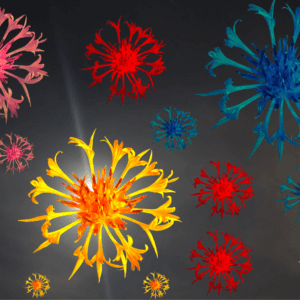 What Are VOCs?
What Are VOCs?
VOCs are a group of chemicals that easily evaporate into the air and can have various negative health effects. These compounds are commonly found in paints, cleaning products, air fresheners, and furniture. Long-term exposure to VOCs has been linked to disrupted sleep, headaches, and respiratory problems.
Common Sources of VOCs:
- Paints and solvents
- New furniture and carpets
- Air fresheners
- Cleaning products
Research on VOCs and Sleep:
Studies have shown that exposure to high levels of VOCs can cause disturbances in sleep. For example, exposure to VOCs in the bedroom could lead to more frequent waking and reduced deep sleep.
Steps to Reduce Exposure:
- Use high-quality air purifiers. Look for those with UltraHEPA filtration and VOC filtration (more info here).
- Ventilate your home: Open windows often to reduce indoor VOC levels.
- Choose low-VOC or no-VOC products: When renovating or purchasing new items, look for low-VOC or no-VOC options.
- Avoid air fresheners and candles: Consider natural alternatives like essential oils.
5. Airborne Particulates
 What Are Airborne Particulates?
What Are Airborne Particulates?
Airborne particulates, or particulate matter (PM), are tiny particles suspended in the air. These can include dust, soot, and chemicals inside the home that originate from outside, such as vehicle emissions, industrial processes, and natural sources like wildfires. Exposure to particulate matter has been linked to a variety of health issues, including respiratory problems and disturbed sleep.
Common Sources of Airborne Particulates:
- Vehicle emissions
- Industrial pollution
- Wildfires
- Construction sites
Research on Airborne Particulates and Sleep:
Recent studies have shown that long-term exposure to airborne particulates can disrupt sleep by causing inflammation in the respiratory system, leading to sleep apnea and other sleep disturbances. One study found that people living in areas with high levels of particulate pollution had poorer sleep quality and increased daytime sleepiness.
Steps to Reduce Exposure:
- Use high-quality air purifiers. Look for those with UltraHEPA filtration (more info here).
- Limit outdoor exposure during high pollution periods: Check local air quality reports and try to stay indoors when air quality outside is poor.
- Seal windows and doors during high pollution periods: Keep windows sealed and doors shut as much as possible to minimize exposure.
6. Blue Light
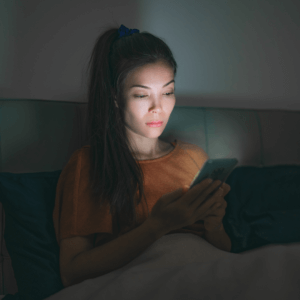 What Is Blue Light?
What Is Blue Light?
Blue light is a type of high-energy visible (HEV) light emitted by digital screens and artificial lighting. Exposure to blue light, particularly before bedtime, can interfere with the production of melatonin, a hormone that regulates sleep.
Common Sources of Blue Light:
- Smartphones and tablets
- Computer screens
- LED lighting
Research on Blue Light and Sleep:
Numerous studies have demonstrated that exposure to blue light before sleep can delay sleep onset, reduce sleep quality, and shift the circadian rhythm. One study found that people who used their phones before bed took longer to fall asleep and had poorer sleep quality compared to those who avoided screens.
Steps to Reduce Exposure:
- Use blue light filters: Many devices now have settings to reduce blue light emission or use apps that filter out blue light.
- Avoid screens before bed: Limit screen time for at least 30 minutes, ideally 60 minutes or more, before sleep.
- Install dim, warm lighting: Use dim lighting with warmer tones in the evening.
7. Noise Pollution
 What Is Noise Pollution?
What Is Noise Pollution?
Noise pollution refers to unwanted or harmful sounds that can affect physical and mental health. Chronic exposure to noise, particularly during sleep, has been shown to interfere with sleep quality, increasing wakefulness and decreasing slow-wave sleep.
Common Sources of Noise Pollution:
- Traffic noise
- Airplane noise
- Construction and industrial activity
- Loud neighbors
Research on Noise Pollution and Sleep:
Studies have linked noise pollution to various sleep disturbances, such as difficulty falling asleep and frequent awakenings. For example, one research study found that people living near airports reported lower sleep quality, increased stress, and greater difficulty falling asleep.
Steps to Reduce Exposure:
- Use earplugs, noise-canceling headphones, or white noise machines: These can help block out disruptive sounds.
- Soundproof your bedroom: Consider thicker curtains, door seals, double-glazed windows, and other soundproofing materials.
- Move your sleeping area: If possible, move your bedroom/sleeping area away from noisy areas, like streets or airports.
8. Electro-magnetic Fields (EMFs)
What Are EMFs?
Electromagnetic fields (EMFs) are produced by electronic devices like cell phones, microwaves, and Wi-Fi routers. Although the evidence is still emerging, studies do increasingly suggest that long-term exposure to EMFs may disrupt sleep by affecting melatonin production and altering circadian rhythms.
Common Sources of EMFs:
- Cell phones and smartphones
- Wi-Fi routers
- Microwave ovens
Research on EMFs and Sleep:
Some studies have shown that EMF exposure can lead to changes in sleep patterns, including increased wakefulness and reduced deep sleep stages.
Steps to Reduce Exposure:
- Limit cell phone use before bed: Avoid using cell phones near your head when sleeping.
- Turn off Wi-Fi at night: Disable wireless devices when they are not in use.
- Use EMF shielding: Consider using EMF shielding materials or devices.
9. Artificial Light at Night
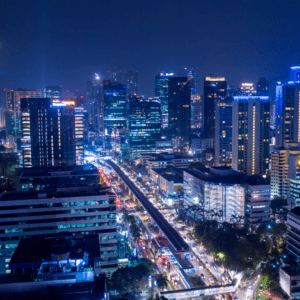 What Is Artificial Light at Night?
What Is Artificial Light at Night?
Artificial light at night (ALAN) is light exposure during nighttime hours, typically from streetlights, home lighting, and urban infrastructure. This kind of exposure can disrupt the body’s circadian rhythm and interfere with sleep quality.
Common Sources of Artificial Light:
- Streetlights
- Home lighting
- TVs and electronic devices
Research on Artificial Light at Night and Sleep:
Exposure to ALAN has been shown to affect melatonin production, delay sleep onset, and reduce deep sleep. Studies suggest that the intensity and duration of artificial light at night can have a significant impact on sleep quality, particularly when exposure occurs close to bedtime.
Steps to Reduce Exposure:
- Use blackout curtains: Block out external lights from street lamps or passing cars.
- Install dim lighting: Use low-intensity lighting during the evening.
- Limit screen time at night: As noted in the section above, avoid using screens that emit blue light, which can disrupt circadian rhythms.
Small Changes Lead to Big Results
As you have seen, environmental toxicants can significantly disrupt sleep quality, contributing to sleep disorders and other health problems.
By identifying and reducing your exposure to common sleep-disrupting toxicants, such as endocrine disruptors, pesticides, VOCs, and more, you can significantly improve your sleep quality and overall health.
Small changes and simple swaps, such as choosing certified organic foods and cosmetics, can make a greater impact on better sleep – and better health – more than most people realize. Toward that end…
Next Up, Consider the USDA Certified Organic Age-Defying Dream Cream from Purity Woods
 Why does world-renowned MD and 7-time NY Times bestselling author, Dr. Joel Fuhrman, call the Age-Defying Dream Cream “a revolutionary cream that restores the appearance of youth to your skin like nothing else out there”?
Why does world-renowned MD and 7-time NY Times bestselling author, Dr. Joel Fuhrman, call the Age-Defying Dream Cream “a revolutionary cream that restores the appearance of youth to your skin like nothing else out there”?
Because this #1 bestseller provides your skin only nature’s most potent botanicals to combat the appearance of fine lines, wrinkles, age spots, sagging, dullness, and other signs of aging.
These plant ingredients in the Age-Defying Dream Cream address all the key issues that lead to visible signs of skin aging, including boosting both elastin and collagen, addressing photoaging, and boosting skin moisture.
(And see below ↓ – you would be hard-pressed to find many of the Age-Defying Dream Cream’s superstar botanicals in other products out there!)
Plus, the Age-Defying Dream Cream is a true rarity for anti-aging creams in that it is USDA Certified Organic. Most skincare products today are loaded with synthetic and potentially toxic ingredients that can actually lead to premature aging and more serious health issues.
Many cosmetic companies, knowing that people are fast becoming aware of these issues, unfortunately try to “greenwash” people – essentially trying to trick them into believing their products are free of these toxic concerns by using marketing phrases such as “natural” or “contains organic ingredients” when their products still contain many synthetic and concerning ingredients.
ALL Purity Woods products including the #1 bestseller, the Age-Defying Dream Cream, are USDA Certified Organic, meaning they go through a very strict and independently performed process to ensure they are free of any synthetic and potentially toxic concerns.
Just a few of the “star” ingredients in the Age-Defying Dream Cream include:
- Organic Red Maple Leaf Extract – The breakdown of elastin is a top reason for the appearance of wrinkles, loose- and thin-looking skin, and other signs of skin aging. Very few ingredients are known to boost elastin. However, red maple leaf extract is a true superstar in this regard! In fact, researchers discovered that unique compounds in red maple leaf extract may even BLOCK elastase, the enzyme responsible for the breakdown of elastin in skin. Some have even dubbed red maple leaf extract the “plant-based Botox” (though we need to be careful of using the commercial term “Botox,” FYI)
- Organic Astaxanthin Extract: Excessive exposure to the sun’s UV rays over the years and decades is another top reason for skin that looks wrinkled, rough, and weather-damaged – otherwise known as photoaging. Astaxanthin is a very powerful red-algae-derived compound that uniquely reverses the appearance of this photoaging, and may even help protect against further UV damage.
- Organic Indian Gooseberry (Amla) Extract, Organic Camu Camu Fruit Extract & Organic Mango Seed Butter – The breakdown of collagen is yet another top cause of skin that looks wrinkled, saggy, and “crepe-papery.” These three botanicals are each sky-high in vitamin C, which is mission-critical to boost the skin’s collagen and help eliminate the issues. Furthermore, they each provide unique additional benefits, such as promoting firmer, tighter, more “plump-looking” skin, brightening the appearance of skin, and evening out skin tone.

